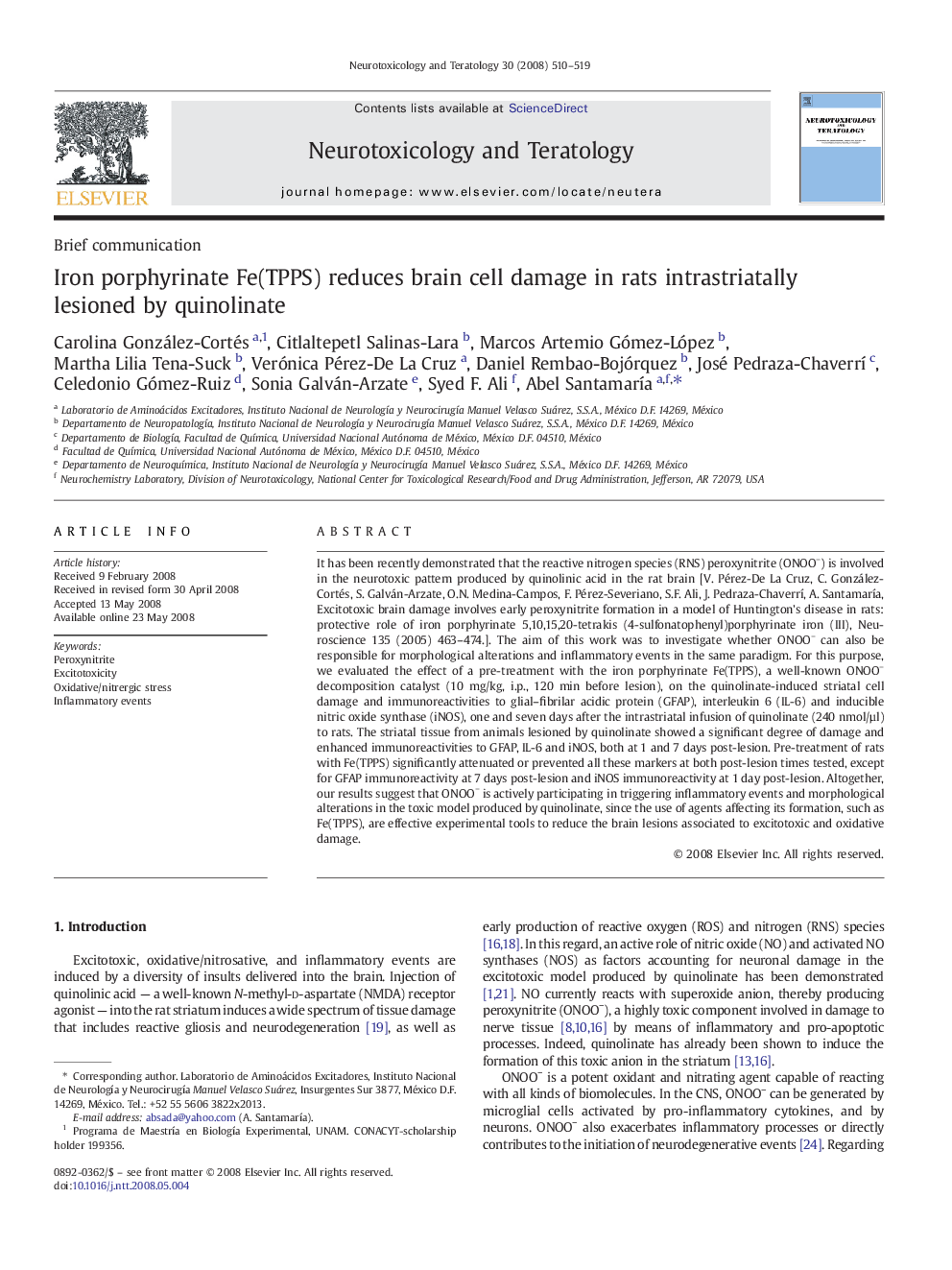| کد مقاله | کد نشریه | سال انتشار | مقاله انگلیسی | نسخه تمام متن |
|---|---|---|---|---|
| 2591757 | 1562101 | 2008 | 10 صفحه PDF | دانلود رایگان |

It has been recently demonstrated that the reactive nitrogen species (RNS) peroxynitrite (ONOO−) is involved in the neurotoxic pattern produced by quinolinic acid in the rat brain [V. Pérez-De La Cruz, C. González-Cortés, S. Galván-Arzate, O.N. Medina-Campos, F. Pérez-Severiano, S.F. Ali, J. Pedraza-Chaverrí, A. Santamaría, Excitotoxic brain damage involves early peroxynitrite formation in a model of Huntington's disease in rats: protective role of iron porphyrinate 5,10,15,20-tetrakis (4-sulfonatophenyl)porphyrinate iron (III), Neuroscience 135 (2005) 463–474.]. The aim of this work was to investigate whether ONOO− can also be responsible for morphological alterations and inflammatory events in the same paradigm. For this purpose, we evaluated the effect of a pre-treatment with the iron porphyrinate Fe(TPPS), a well-known ONOO− decomposition catalyst (10 mg/kg, i.p., 120 min before lesion), on the quinolinate-induced striatal cell damage and immunoreactivities to glial–fibrilar acidic protein (GFAP), interleukin 6 (IL-6) and inducible nitric oxide synthase (iNOS), one and seven days after the intrastriatal infusion of quinolinate (240 nmol/µl) to rats. The striatal tissue from animals lesioned by quinolinate showed a significant degree of damage and enhanced immunoreactivities to GFAP, IL-6 and iNOS, both at 1 and 7 days post-lesion. Pre-treatment of rats with Fe(TPPS) significantly attenuated or prevented all these markers at both post-lesion times tested, except for GFAP immunoreactivity at 7 days post-lesion and iNOS immunoreactivity at 1 day post-lesion. Altogether, our results suggest that ONOO− is actively participating in triggering inflammatory events and morphological alterations in the toxic model produced by quinolinate, since the use of agents affecting its formation, such as Fe(TPPS), are effective experimental tools to reduce the brain lesions associated to excitotoxic and oxidative damage.
Journal: Neurotoxicology and Teratology - Volume 30, Issue 6, November–December 2008, Pages 510–519